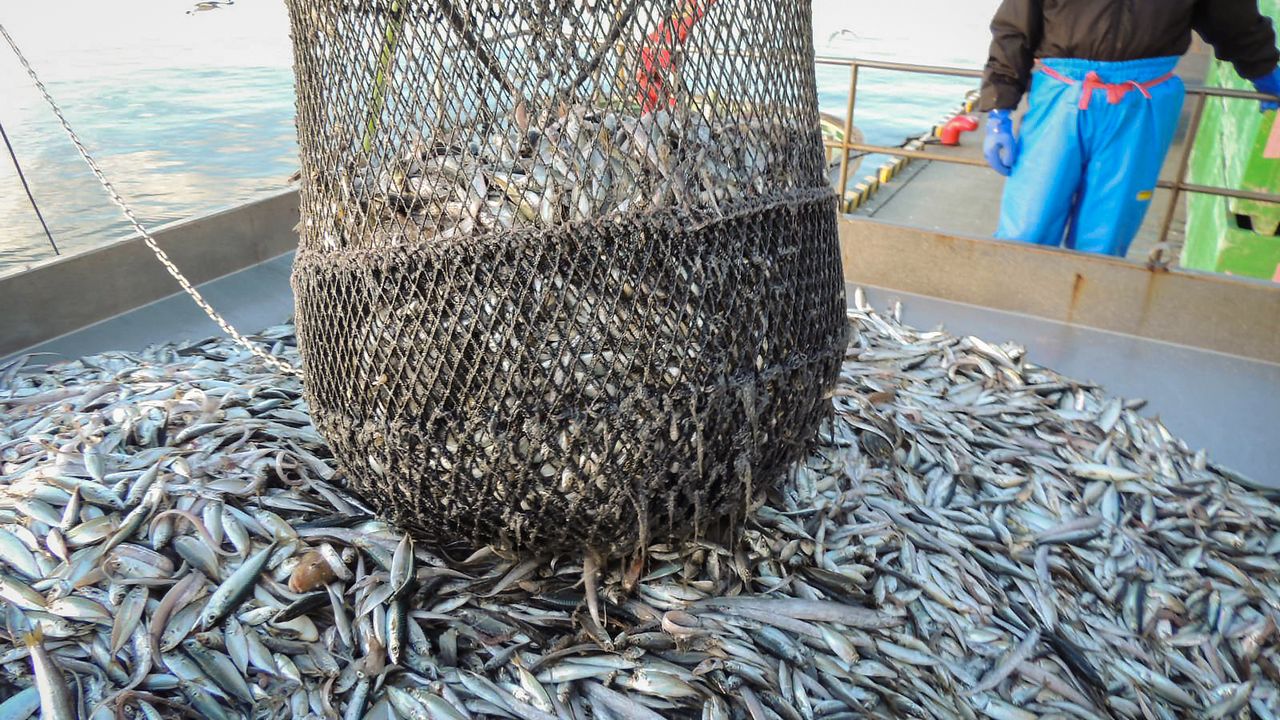
The High Price of Japanese Seafood: Can Consumption Climb in 2023?
Guideto Japan
Lifestyle- English
- 日本語
- 简体字
- 繁體字
- Français
- Español
- العربية
- Русский
Recent years have seen poor catches and resulting high prices for fish commonly eaten in Japan such as the Pacific saury (sanma), which has made it more difficult for people to enjoy seafood. High prices for seafood traditionally eaten during the New Year season, such as tuna (maguro), salmon roe (ikura), and crab, meant that many people had to do without some of these favorite dishes over the holiday.
Abnormal weather around the globe, the COVID-19 pandemic, and disruptions caused by the Russian invasion of Ukraine have led to higher food prices, which in turn have led to fewer people consuming fish and other seafoods. Ironically, however, catches of most types of seafood have remained largely the same. A senior official at the Japan Fisheries Association, which promotes activities designed to increase seafood consumption, strongly advocates the importance of getting more people in Japan to consume fish caught by Japanese fishermen.
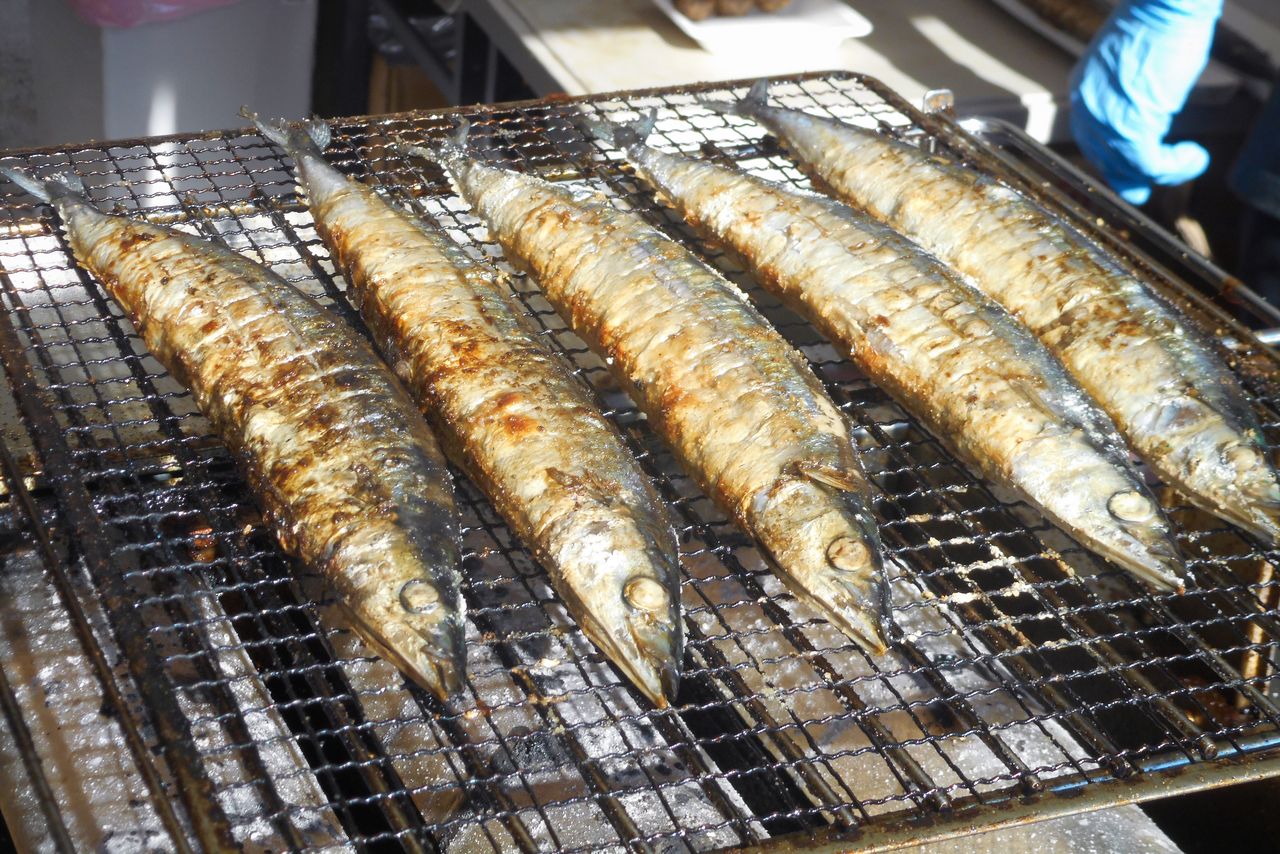
Salt-grilled sanma—once a staple in Japanese homes—is becoming less common. (© Kawamoto Daigo)
Popular Seafoods: From Rare to Unattainable
The 2022 fishing season once again saw poor catches of Pacific saury. The amount of sanma caught was on par with the 2021 season, which was the worst in history (approximately 18,000 tons). This was one twentieth to one thirtieth of the levels recorded in the late 1950s to the early 1960s—the period of the largest catches—and about a tenth of the size of catches just 10 years ago. Many believe that these poor catches will continue for the foreseeable future and that sanma will continue to be smaller in size than normal, which means that it will remain difficult to enjoy the hefty, fatty fish of the past.
Although catches of salmon in the waters off Hokkaidō and elsewhere have recovered since October 2022, the total catch for the season was low, which has led to persistent high prices for salmon roe. According to a purchasing agent at a major supermarket who has intimate knowledge of seafood distribution, ikura that sold for ¥598 per 100 grams 10 or so years ago now costs upward of ¥1,500.
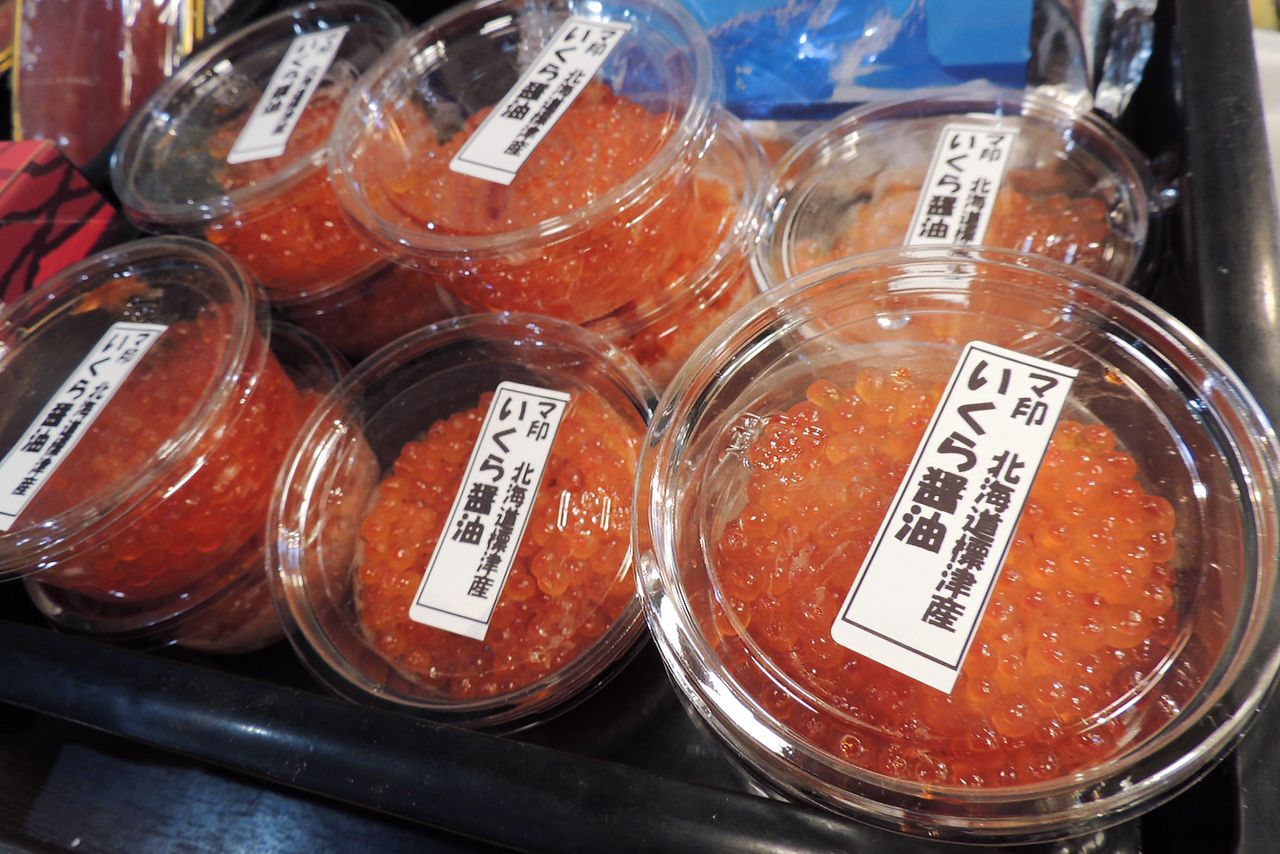
The price of ikura has increased nearly threefold over the last 10 years. (© Kawamoto Daigo)
The year-end catch of tuna was also disappointing, and the Pacific bluefin tuna catch was particularly low. At Tokyo’s Toyosu Market, maguro January prices were at least ¥10,000 per kilogram for many of the wild domestic bluefin caught in the waters off Ōma, Aomori Prefecture, a price that was 30% higher than prices in mid-December.
King crab, another marine product in great demand during the winter, is also in shorter supply. An e-commerce site where middle traders at the Toyosu Market sell their products listed bundles of four king crab legs at the high price of ¥40,000. Herring roe, the price of which had remained generally unchanged for the last few years, was 10% to 20% more expensive compared to last year.
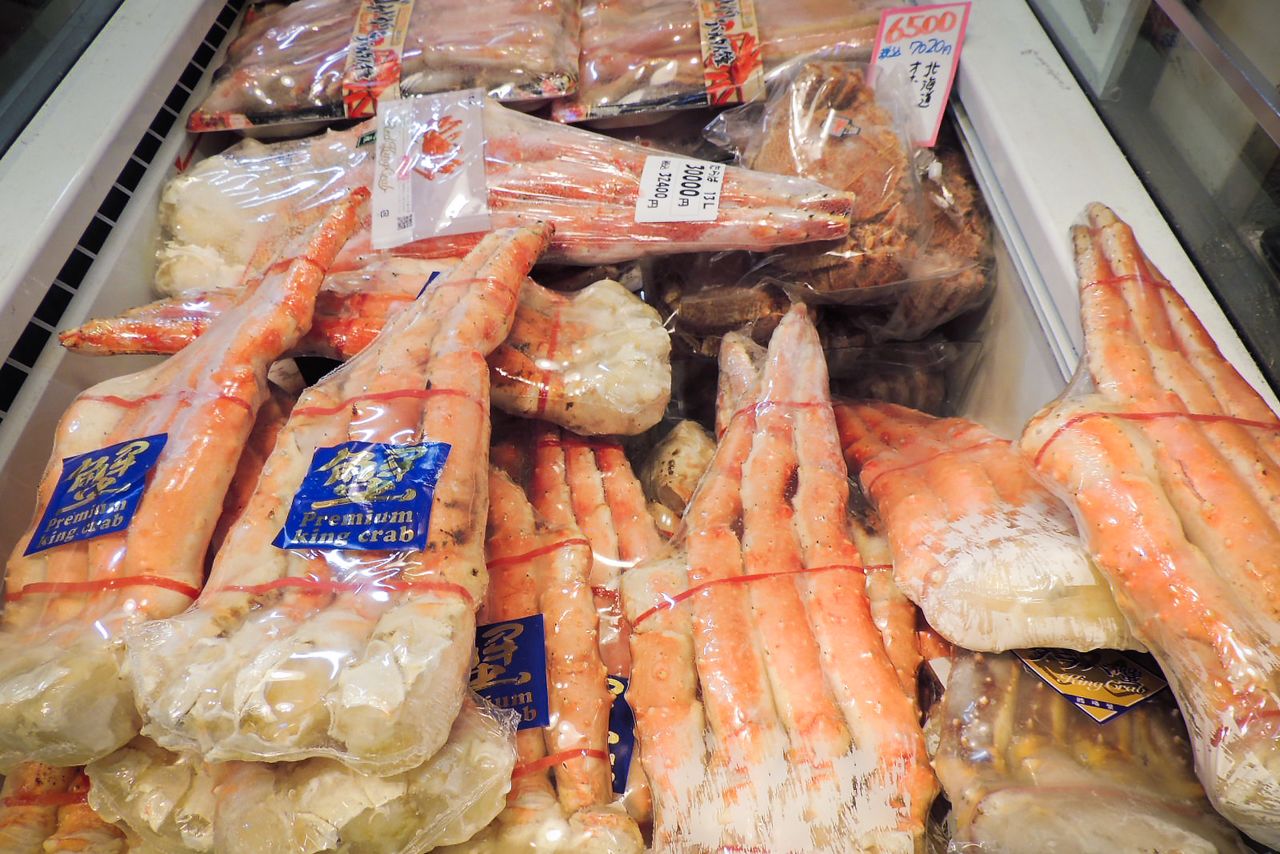
Bundles of king crab legs selling for ¥34,000. Short supplies since 2021 have led to higher prices. (© Kawamoto Daigo)
Fish Used as Fertilizer and Feed
All this seems to suggest that poor catches of all types of marine products, from the most common to the highest quality, mean that domestic marine products as a whole are increasingly difficult to obtain. However, quite the opposite is true. Catches of sardines, mackerel, scallops, bonito (katsuo), and pollock (suketōdara) are all at levels comparable to previous years.
These five varieties were listed by the Ministry of Agriculture, Forestry, and Fisheries as being the top five in terms of yield for fiscal 2021 (based on weight; scallop weight measured without the shell). Of the total marine yield of 3.4 million tons, 1.1 million tons—approximately one third—consisted of sardines and mackerel. In spite of this, one does not get the impression that there is an abundance of these two varieties in supermarkets or department store food sections. Rather, uneven distribution and consumption have led to the impression that all seafood varieties suffer from poor catches and are therefore expensive.
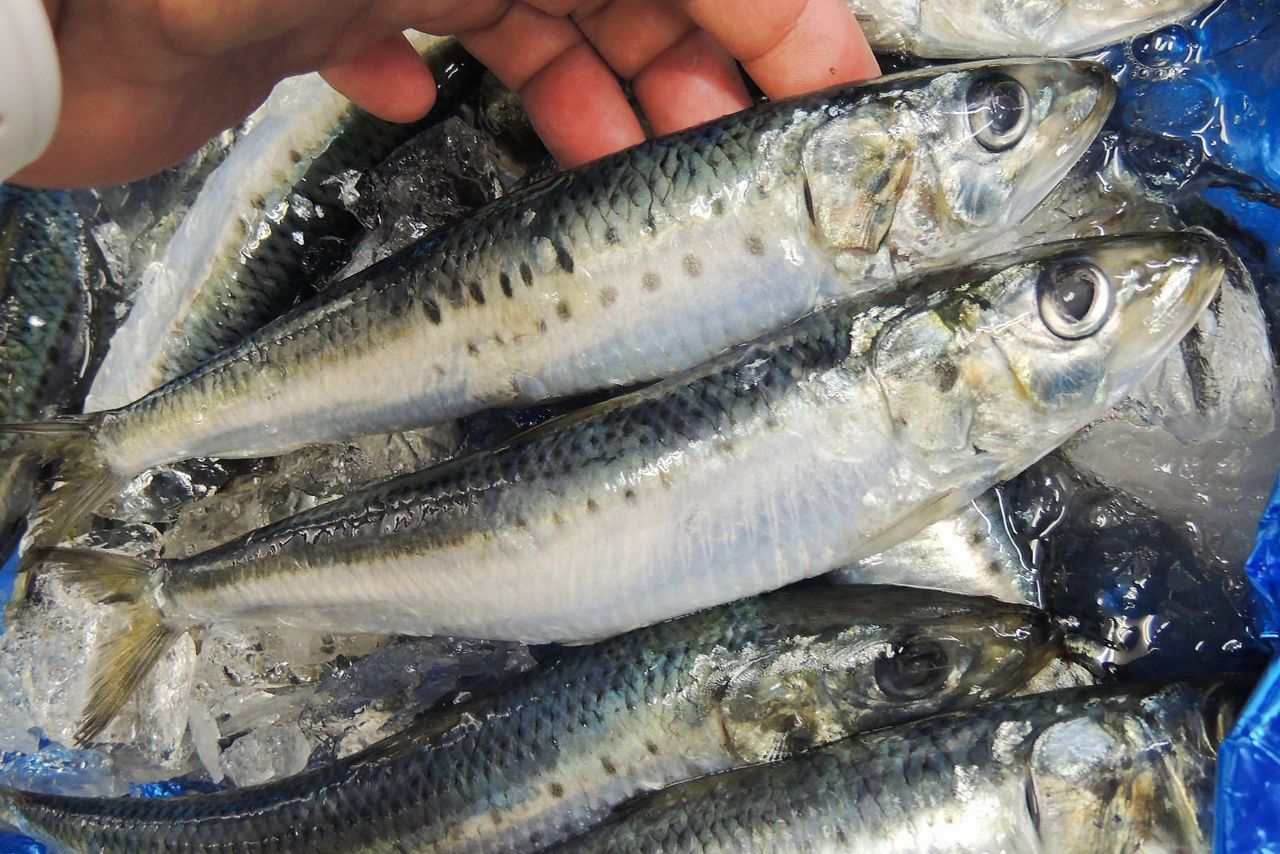
Fresh sardines over 100 grams known as ōba on sale. (© Kawamoto Daigo)
These are by no means varieties of fish that are unpopular with consumers. Sardines are delicious when served as sashimi, salt-grilled, or tempura. Mackerel are extremely popular and are used in even more dishes than sardines, including salt-grilled mackerel, mackerel simmered in miso, marinated mackerel (shime-saba), mackerel curry rice, mackerel burgers, and a local delicacy unique to Fukui Prefecture known as heshiko (mackerel pickled in rice bran paste).
A survey conducted by MAFF that investigated consumption patterns for these two varieties of fish (the Marine Product Shipment Volume Survey by Usage, published in October 2022) indicated that sardines shipped to fish markets in an unfrozen state (i.e. for fresh consumption) accounted for only 14.1% of the total amount shipped. Other uses of sardines and sardine products accounted for overwhelmingly high percentages. These included “fish oil and fertilizer” (40.8%) and “feed for fish cultivation and fishing” (34.4%). Only 13.8% of the mackerel catch was devoted to fresh fish sales for human consumption, and canned fish products accounted for 27.6%. In all, 45.3% of the mackerel catch went into fish feed and bait.
Large portions of both the sardine and mackerel catches are exported as well. According to a trading company that handles marine products, domestic mackerel are exported to Southeast Asia and Africa; one representative notes, “Japanese mackerel are smoked and served as a traditional dish in the countries of southern Africa.” Salt-grilled mackerel, a familiar dish served both at home and at restaurants as well as in box lunches in Japan, are mainly imported from Norway. The fact that domestically caught mackerel are exported and imported mackerel are consumed in Japan creates mixed emotions among many Japanese.
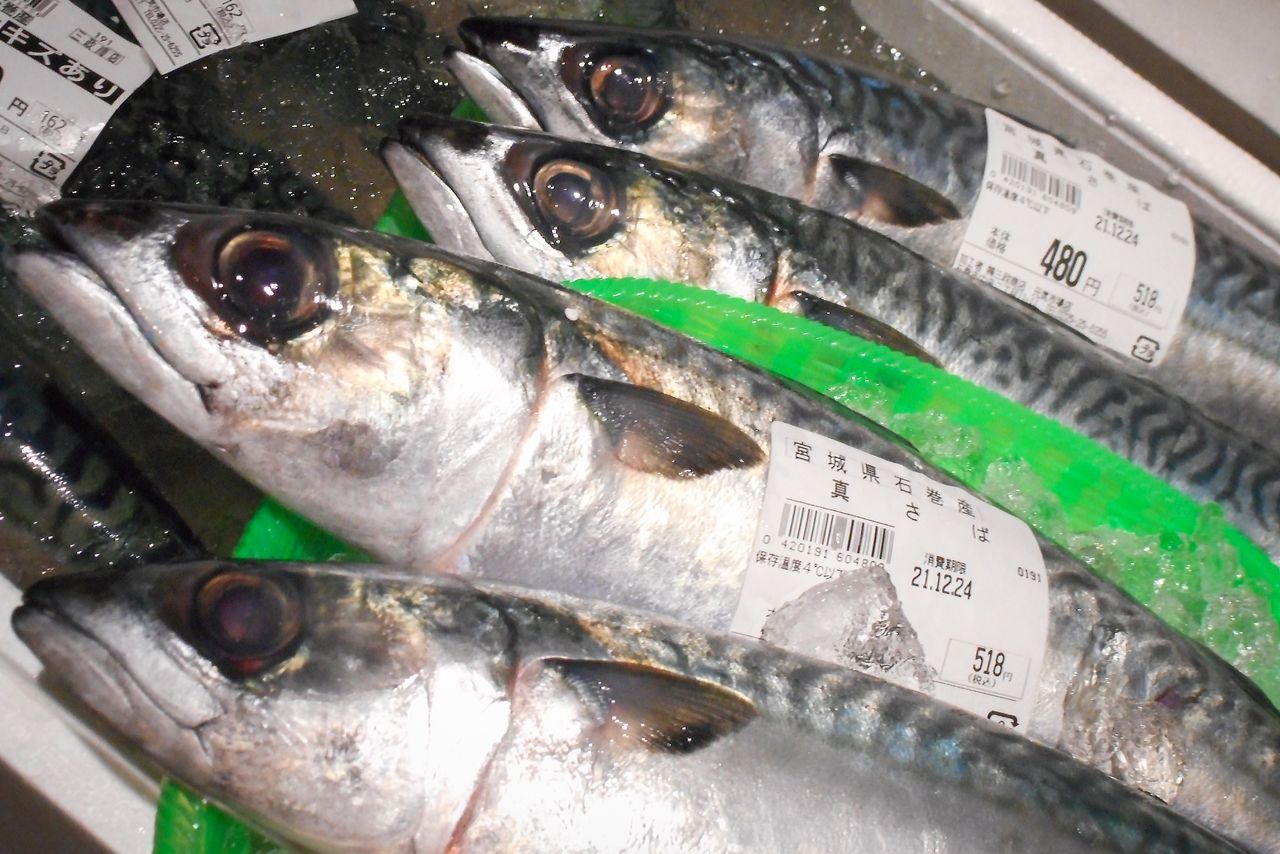
The domestic mackerel available on the market in Japan are generally larger fish weighing at least 500 grams. (© Kawamoto Daigo)
Boosting Consumption of Domestic Fish
According to an individual associated with a fishing port in Miyagi Prefecture, one of the reasons why Japanese cannot access the domestic catch is “because the sardines and mackerel are sorted at the port, and the ones that are not large and fatty are put into a group destined for freezing. They aren’t shipped as fresh fish.” Even when there are some larger fish in the day’s catch, “in many cases there are so few people working at the port that it’s impossible to separate certain fish out for shipping and consumption in Japan.”
An auctioneer at the Toyosu Market explains that “we look to purchase mackerel that are at least 500 grams and sardines that are at least 100 grams. We can’t sell anything smaller than that.” While slightly smaller sanma can be sold on the market as a “seasonal fish,” sardines and mackerel caught throughout the year that are smaller than the standard market size can only be sold at rock-bottom prices.
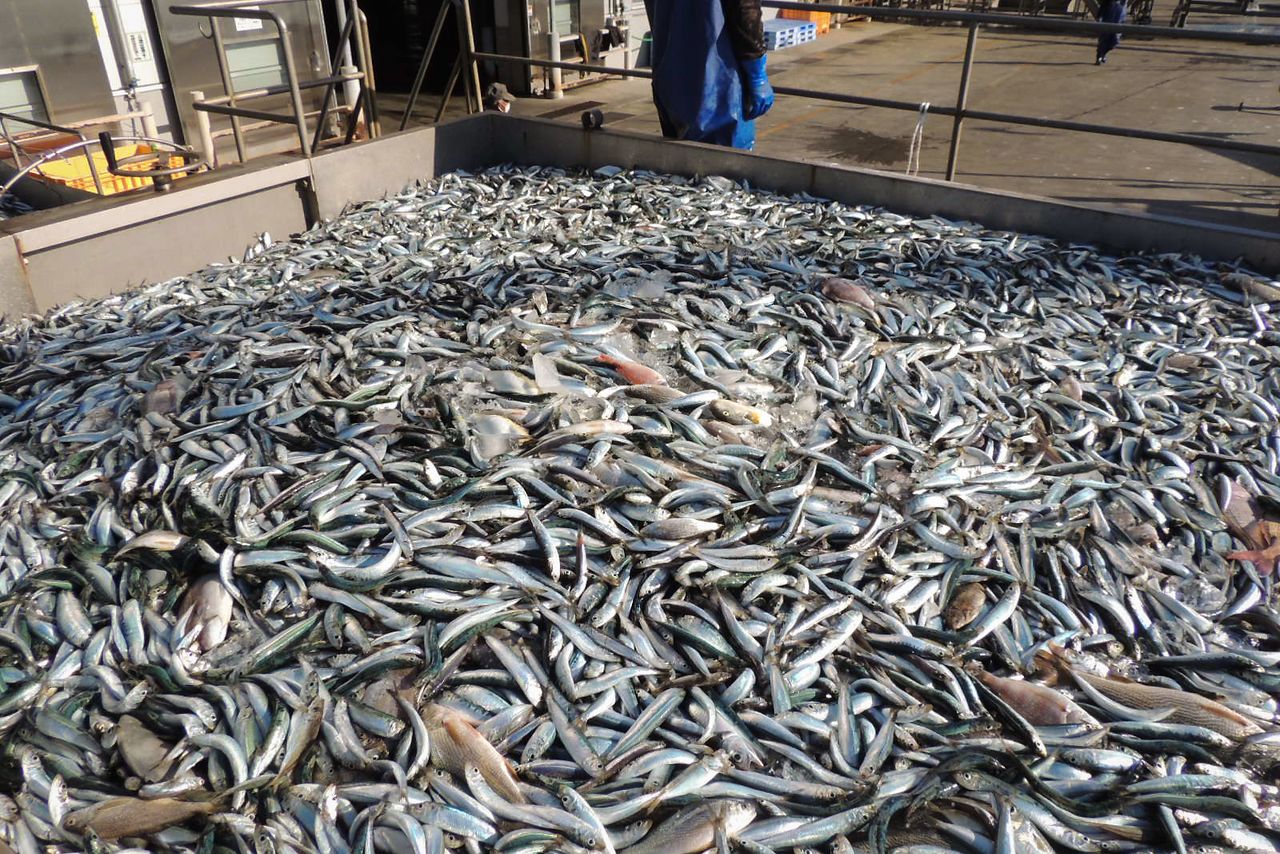
Large catches of smaller-sized mackerel and sardines are marked for uses other than human consumption. (© Kawamoto Daigo)
The Fisheries Agency has set out the following goals: increase the numbers of fish caught by improving resource management policies and in doing so make major increases in the food self-sufficiency rate. However, this is not as simple as it seems.
During the three-year period from fiscal 2000 to fiscal 2002, the marine product self-sufficiency rate was at a record low of 53%. By fiscal 2021, this improved to 59%, but there has been little reason to celebrate. The per capita consumption of marine products in fiscal 2001 was 40.2 kilograms. Since then, the figure has continued to drop until it reached 23.0 kilograms in fiscal 2021. What this means is that the self-sufficiency rate seems to have improved only because demand has fallen. This can only mean that the culture and custom of seafood consumption in Japan is in decline.
What is even worse is that even as Japanese people decry the poor sanma and other catches, they are becoming even less interested in purchasing and consuming domestic marine products. In addition to mackerel imported from Norway, the horse mackerel used for the popular dish known as aji-no-hiraki (grilled, cut open, and dried horse mackerel) are largely imported from South Korea and the Netherlands, and fillets of coho salmon (gin-sake) imported from Chile are commonly used for the grilled salmon consumed in Japan. This trend is in part due to the fact that, in contrast to domestic marine products which are brought to understaffed ports and weave their way through a complex distribution system, imported marine products come directly to trading companies, are sold to middle traders, and are then shipped to retailers and restaurants in a much smoother distribution system. Once imported marine products became commonplace on Japanese dinner tables, their quality began to improve, which has made it even more difficult to shift consumers back to domestic marine products.
In spite of this, however, simply raising awareness of the issue among Japanese consumers and providing them with more opportunities to purchase domestic sardines and mackerel can lead to increases in the yearly amount consumed and the food self-sufficiency rate, which in turn will lead to improvements in the domestic distribution system from port to dinner table. Protecting the Japanese fishing industry requires that catches be increased while maintaining appropriate management practices, improving the sorting and distribution systems at ports, and changing the attitudes of consumers. The year 2023 should therefore mark the start of efforts to better utilize domestic resources for the sake of future generations.
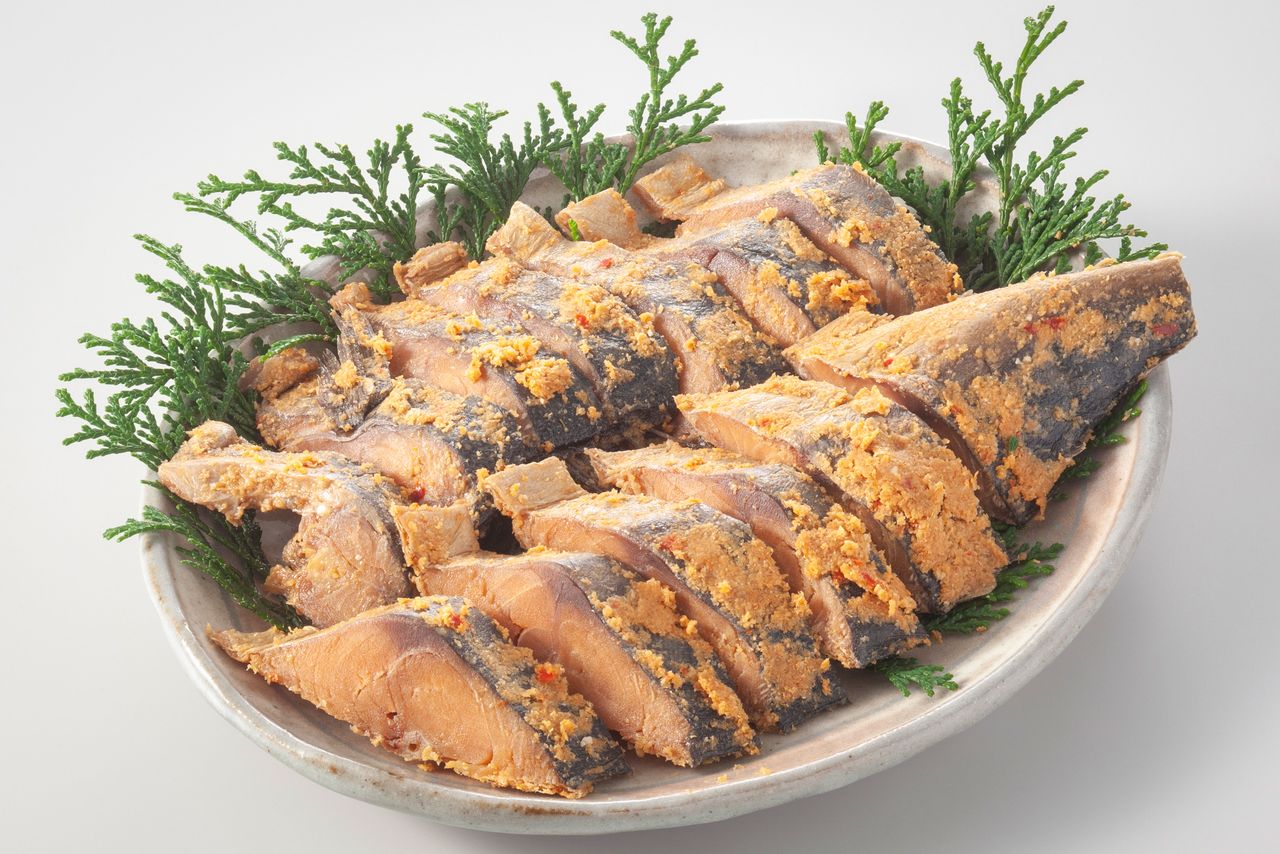
Heshiko, a local delicacy consisting of mackerel pickled in rice bran paste, is increasingly made using fatty mackerel imported from Norway. Some restaurants have a policy of using only domestic mackerel as a way to attract customers. (© Pixta)
(Originally published in Japanese. Banner photo: A catch of small-sized mackerel and sardines. © Kawamoto Daigo.)